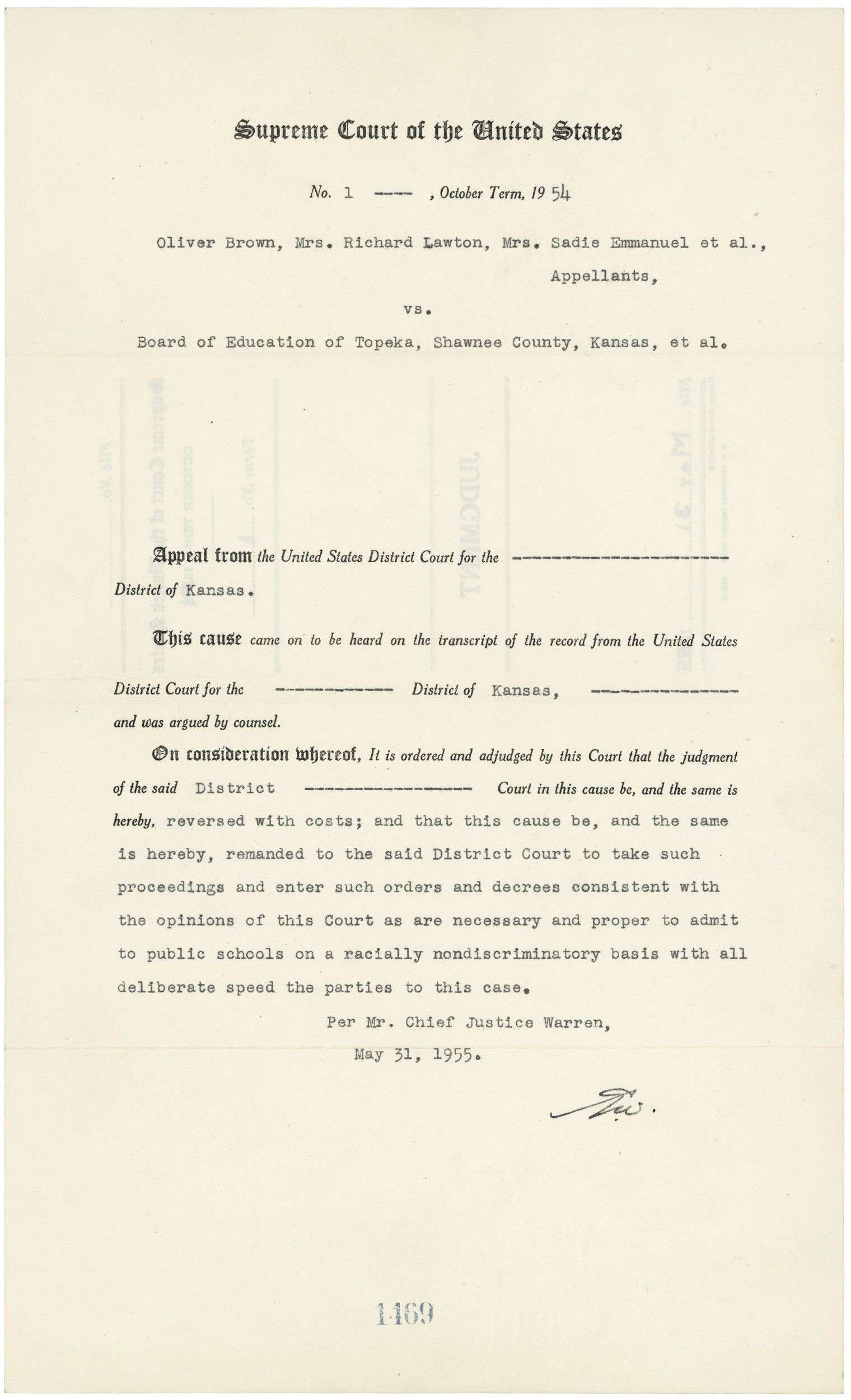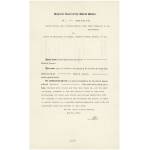Judgment in Brown v. Board of Education
5/31/1955
Add to Favorites:
Add all page(s) of this document to activity:

Add only page 1 to activity:
Add only page 2 to activity:
On May 17, 1954, in Brown v. Board of Education of Topeka (five separate cases consolidated under a single name), the U.S. Supreme Court ruled unanimously that separate but equal public schools violated the 14th Amendment.
On May 31, 1955 – one year and two weeks after the ruling that racial segregation in public schools was unconstitutional – Chief Justice Earl Warren issued this decree, ruling how desegregation was to be carried out. Known as Brown II, the decree directs that schools be desegregated under the control of Federal district judges "with all deliberate speed."
Brown II was intended to work out the mechanics of desegregation. Due to the vagueness of the phrase "all deliberate speed" however, many states were able to stall the Court’s order to desegregate their schools. The legal and social obstacles that southern states put in place and encouraged, in their effort to thwart integration, served as a catalyst for the student protests that launched the Civil Rights Movement.
On May 31, 1955 – one year and two weeks after the ruling that racial segregation in public schools was unconstitutional – Chief Justice Earl Warren issued this decree, ruling how desegregation was to be carried out. Known as Brown II, the decree directs that schools be desegregated under the control of Federal district judges "with all deliberate speed."
Brown II was intended to work out the mechanics of desegregation. Due to the vagueness of the phrase "all deliberate speed" however, many states were able to stall the Court’s order to desegregate their schools. The legal and social obstacles that southern states put in place and encouraged, in their effort to thwart integration, served as a catalyst for the student protests that launched the Civil Rights Movement.
Transcript
Supreme Court of the United StatesNo. 1 ------ , October Term 1954
Oliver Brown, Mrs. Richard Lawton, Mrs. Sadie Emmanuel et al.. Appellants,
vs.
Board of Education of Topeka, Shawnee County, Kansas, et al.
Appeal from the United States District Court for the District of Kansas.
This case came on to be heard on the transcript of the records from the United States District Court for the District of Kansas, and was argued by counsel.
On consideration whereof, It is ordered and adjudged by this Court that the judgement of the said District Court in this cause be, and the same is hereby, reversed with costs; and that this cause be, and the is hereby, remanded to the said District Court to take such proceedings and enter such orders and decrees consistent with the opinions of this Court as are necessary and proper to admit to public schools on a racially nondiscriminatory basis with all deliberate speed the parties to this case.
Per Mr. Chief Justice Warren,
May 31, 1955
This primary source comes from the Records of the Supreme Court of the United States.
National Archives Identifier: 596300
Full Citation: Judgment, Brown v. Board of Education; 5/31/1955; Case File for Brown et al. v. Board of Education of Topeka et al.; Appellate Jurisdiction Case Files, 1792 - 2010; Records of the Supreme Court of the United States, Record Group 267; National Archives Building, Washington, DC. [Online Version, https://docsteach.org/documents/document/judgment-brown-v-board, April 19, 2024]Activities that use this document
- Separation of Powers or Shared Powers
Created by the National Archives Education Team
Rights: Public Domain, Free of Known Copyright Restrictions. Learn more on our privacy and legal page.





